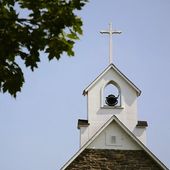The film based on his presidency might not have won the Academy Award for best picture, but Abraham Lincoln remains plenty popular in Washington. For the third straight year, the memorial honoring the 16th president was the most visited of the monuments and memorials in the city in 2011, drawing an estimated 6 million visitors, according to the National Park Service.
The Park Service on Tuesday released its most recent report on the number of trips to its 400 sites across the country and the economic impact of those attractions. Tourists made nearly 45 million visits to the capital region’s national parks, memorials, memorial parks, monuments and historic sites, raking in $1.37 billion for the local economy.
The report was conducted by Michigan State University for the Park Service and includes figures based on the spending habits of nearly 300 million tourists. The report showed that in 2011, those millions of park visitors spent $30 billion nationwide during their trips.
The attractions on the Mall accounted for just less than $910 million in spending, based on the study. The Lincoln Memorial alone accounted for a $204 million economic benefit in 2011, researchers said.
“The Lincoln Memorial does get more visitors than some of the other monuments and memorials in the D.C. area,” Park Service spokeswoman Jenny Anzelmo-Sarles said. “It’s the anchor of one end of the National Mall. It’s iconic. President Lincoln is a historic and monumental figure in our history.”
The Washington Monument fared less well in the report.
Total visitors dropped from about 628,000 in 2010 to about 430,000 in 2011. Much of that was due to an earthquake that struck the region on Aug. 23, 2011, closing the Washington Monument for repairs. It is not expected to reopen until at least next year.
The Martin Luther King Jr. National Memorial drew nearly 1.5 million visitors in 2011, even though it was not opened to the public until August of that year and a hurricane pushed back its formal dedication until October 2011.
The Vietnam War Memorial saw a drop in visitors in 2011, from 4.4 million in 2010 to 4 million in 2011. But the total was still enough to make it the second most visited attraction on the Mall. The World War II Memorial also saw a decline, from 4 million to 3.8 million visitors.
“There are a lot of factors that affect visitation numbers,” Ms. Anzelmo-Sarles said. “If there is construction, or if something is open or closed, maybe if there’s a historical event one particular year, that could increase visitation.”
Kate Gibbs, spokeswoman for Destination DC, the city’s official convention and visitors bureau, said the iconic nature of the monuments continues to draw people from around the country who relate to Washington because of them.
“There’s no question that the National Mall itself appears almost nightly on the international news,” she said. “People have a good image of the landscape of the National Mall, whether it’s the Washington Monument or the Lincoln Memorial. People see the U.S. Capitol building and understand the monuments are nearby and understand that to be the center of American politics.”
Among the Park Service’s 400 properties, or “units,” are 124 historical sites, 76 monuments, 58 national parks, 25 battlefields or military parks, 18 preserves, 18 recreation areas, 10 seashores, four lakeshores, four parkways, and two reserves.
The Blue Ridge Parkway was the most visited of all the Park Service units, while Great Smoky Mountains National Park topped the list for most visited national park.
Aside from the Lincoln Memorial, the only other site in the D.C. area to make the list of top 10 most visited Park Service units nationally was the George Washington Memorial Parkway — which includes the Mount Vernon Trail and Theodore Roosevelt Island, as well as the U.S. Marine Corps War Memorial, and drew 7.4 million visitors in 2011.
“The national parks are so integrated into the daily lives of people who live here,” Ms. Anzelmo-Sarles said. “This is a place that truly represents the American story.”
• Meredith Somers can be reached at msomers@washingtontimes.com.



Please read our comment policy before commenting.